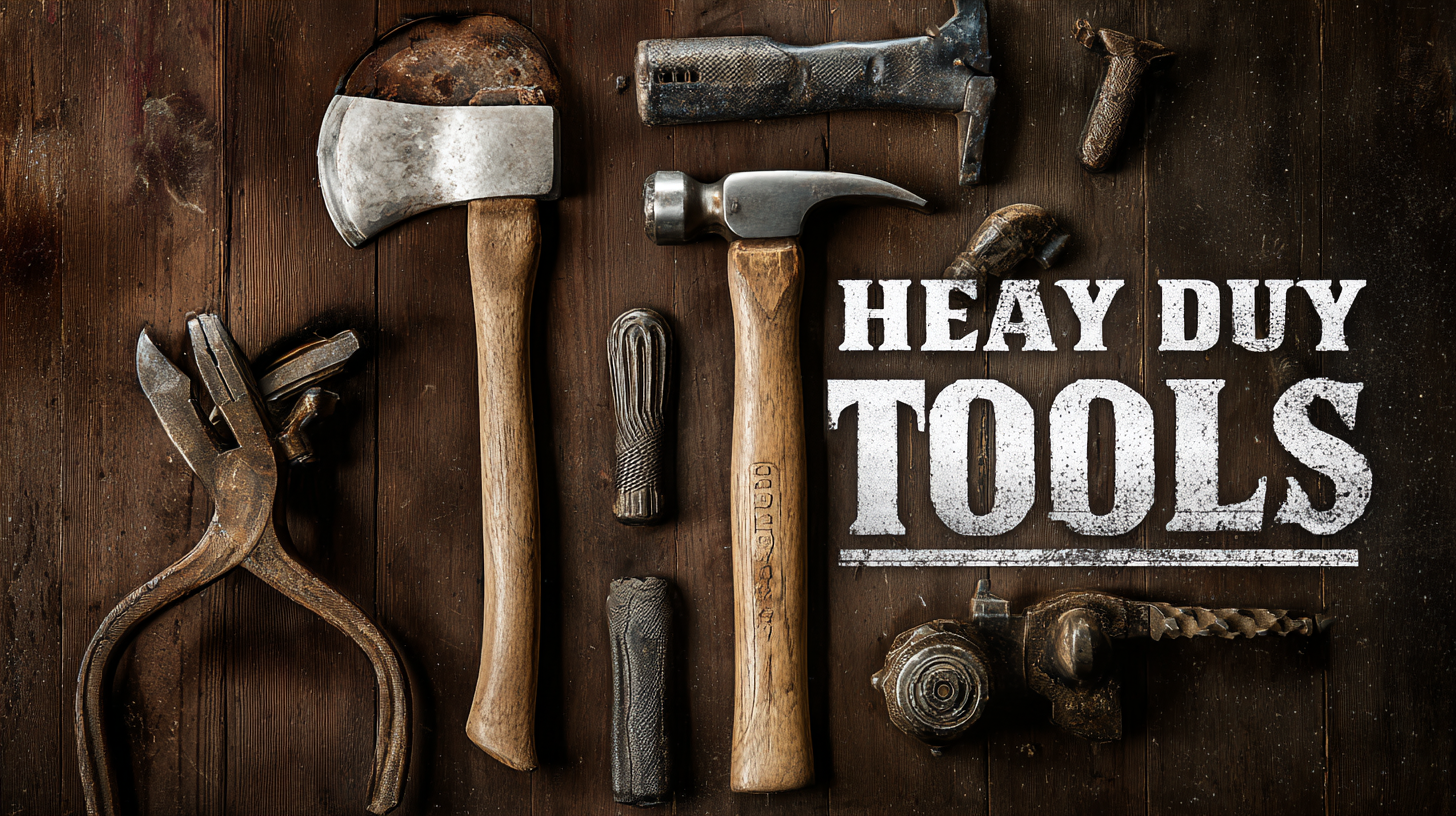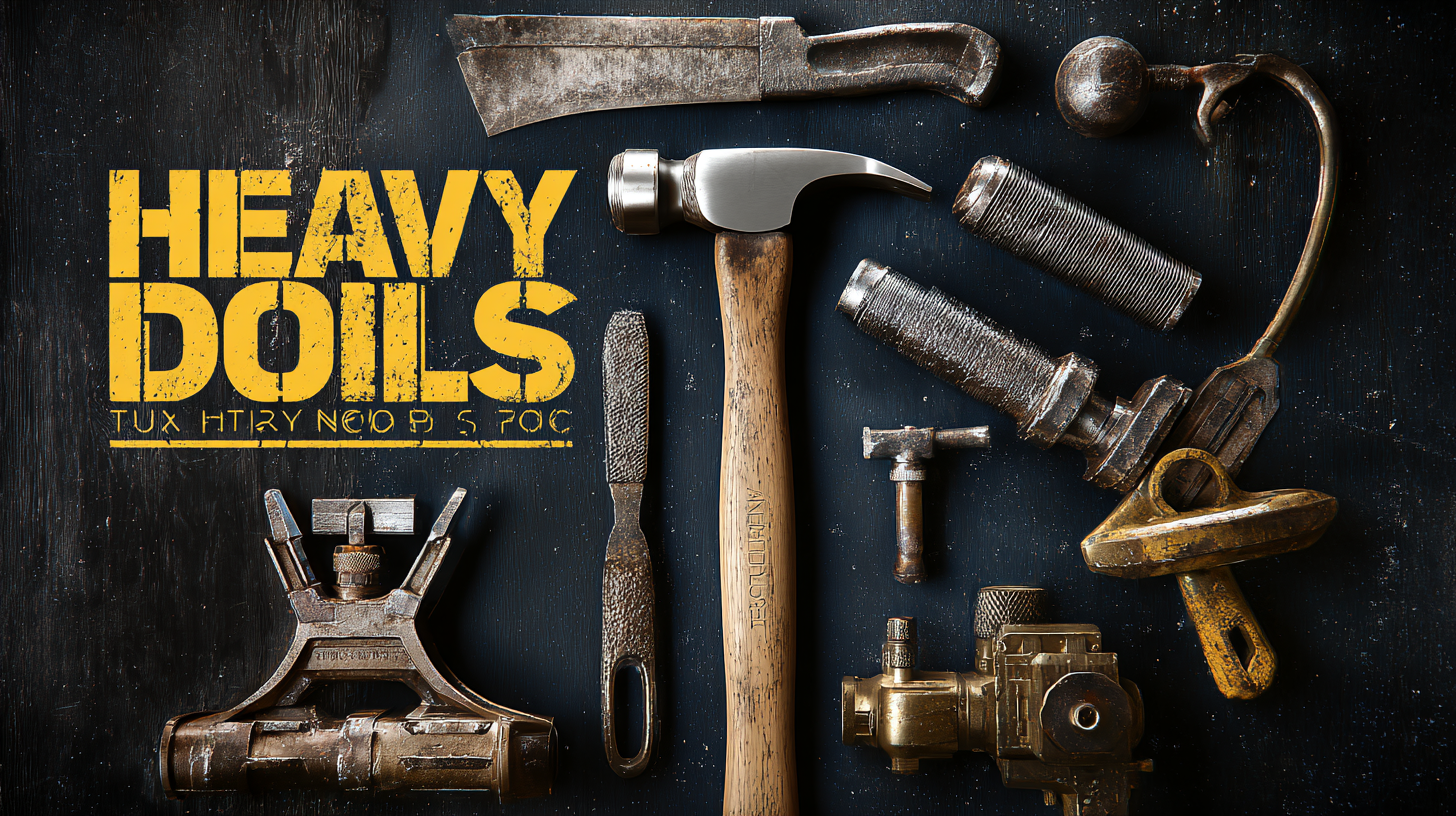Blog
How to Choose the Best Heavy Duty Tools for Your Next Project
When embarking on a demanding project, the choice of tools can significantly impact both efficiency and results, particularly when it comes to Heavy Duty Tools. According to a recent report by IBISWorld, the market for heavy duty tools is expected to grow at an annual rate of 4.2% over the next five years, driven by increasing construction and manufacturing activities worldwide.

Selecting the right heavy duty tools not only ensures that tasks are completed with precision but also enhances safety and durability, minimizing downtime and repair costs. With a plethora of options available, understanding the specific requirements of your project is crucial.
This blog will guide you through essential considerations and expert insights, ensuring you make informed decisions to optimize your workflow and achieve your project's goals.
Understanding Heavy Duty Tools: Key Features and Benefits
When embarking on a significant project, selecting the right heavy-duty tools is crucial for success. Heavy-duty tools are engineered for durability, power, and efficiency, making them essential for tough jobs. One of the key features to look for is the material quality; tools made from high-grade steel or alloys not only offer strength but also enhance longevity, allowing them to withstand rigorous use without bending or breaking. Additionally, weight is a vital consideration. Heavier tools often deliver better performance and stability, which is especially important for tasks like demolition or large-scale construction.
Another significant benefit of heavy-duty tools is their ergonomic design. Many manufacturers incorporate user-friendly features such as anti-vibration systems and comfortable grips, reducing fatigue during prolonged use. This is particularly beneficial when tackling extensive projects that require sustained effort. Furthermore, heavy-duty tools often come with enhanced safety features, ensuring that you can work confidently without the constant worry of accidents. By understanding these key attributes, you'll be able to choose the best heavy-duty tools that cater to your specific project needs, ultimately contributing to better performance and results.
Evaluating Durability: How to Assess Tool Quality
When selecting heavy-duty tools, evaluating durability is crucial to ensure that they withstand rigorous demands. According to a report by the American National Standards Institute (ANSI), nearly 30% of tool failures can be attributed to inadequate durability, emphasizing the importance of quality assessment in tool selection. Look for tools that meet industry standards and are certified for their endurance, as these usually undergo rigorous testing to ensure reliability.
Tip: Always check the material composition of the tools. High-quality steel and other rugged materials often indicate better performance and longevity. Additionally, tools with protective coatings can resist corrosion and wear, further extending their lifespan.
Another important aspect of assessing tool quality is reviewing user testimonials and professional evaluations. Research from the Tool Manufacturer’s Association highlights that tools with consistently high ratings tend to have a failure rate of less than 5% over extended use. Pay attention to feedback regarding the tool's performance in harsh environments, as this indicates overall durability.
Tip: Don’t hesitate to invest in well-known brands that offer warranties. A solid warranty is a reflection of a manufacturer’s confidence in their product’s durability and quality, serving as a safety net for your investment.

Top Brands in Heavy Duty Tools: A Global Overview
When it comes to selecting heavy-duty tools for your next project, understanding the top brands in the industry is essential. According to the 2023 Construction Tools Market Report, the global heavy-duty tools market is expected to reach $60 billion by 2027, reflecting a compound annual growth rate (CAGR) of 5.8%. This growth is largely driven by increasing construction activities and demand for enhanced efficiency. Leading brands like DeWalt, Milwaukee, and Bosch are continuously innovating to meet these demands, offering tools that combine durability with advanced technology.
DeWalt, for instance, has been recognized for its robust power tools, with a significant market share of approximately 20%. The brand's commitment to quality is evident in its placement in numerous industry surveys, where professionals frequently cite it as their top choice for reliability and performance. Similarly, Milwaukee has gained popularity among tradespeople, with their battery-operated tools gaining a 15% market share; this rise is attributed to their outstanding battery life and ergonomic designs. Bosch, known for its precision engineering, continues to hold a steadfast presence, especially in Europe, making it a formidable option for users looking for reliable heavy-duty tools tailored to rigorous applications.
How to Choose the Best Heavy Duty Tools for Your Next Project - Top Brands in Heavy Duty Tools: A Global Overview
| Tool Type | Power Source | Weight (lbs) | Warranty (years) | Typical Use Cases |
|---|---|---|---|---|
| Cordless Drill | Battery | 5.5 | 3 | Woodworking, Metalwork |
| Impact Wrench | Electric | 8.0 | 5 | Auto Repair, Construction |
| Table Saw | Electric | 45.0 | 2 | Woodworking, Cabinet Making |
| Angle Grinder | Electric | 6.5 | 3 | Metal Fabrication, Grinding |
| Rotary Hammer | Electric | 10.0 | 2 | Masonry Work, Demolition |
| Circular Saw | Electric | 7.0 | 3 | Wood Cutting, Home Renovation |
Choosing the Right Tool for Your Project: Factors to Consider
When selecting heavy-duty tools for your next project, several key factors should guide your decision. First, assess the specific requirements of your project. Are you working with particularly tough materials or in challenging environments? Tools designed for heavy-duty applications often feature enhanced durability and power, which can make a significant difference in performance and efficiency. According to industry data, utilizing the right tools can boost productivity by up to 30%, emphasizing the importance of making informed choices.
Another crucial aspect is the ergonomic design of the tools. Comfortable tools reduce fatigue and increase the precision of your work. Look for features such as grips that prevent slippage and weight distributions that minimize strain. Research indicates that user-friendly tools can enhance effectiveness, especially during prolonged use.
**Tips**: Before making a final decision, compare various models and read reviews from professionals in your field. Additionally, consider how well the chosen tools integrate with any project management systems you might be using, as coordination in purchasing and using tools can streamline your workflow significantly. Engaging with community forums can also provide valuable insights and recommendations tailored to your specific needs.
Heavy Duty Tools Selection Factors
Maintaining Your Heavy Duty Tools for Longevity and Performance
Maintaining your heavy-duty tools is crucial for ensuring their longevity and optimal performance. Regular cleaning after each use can prevent the buildup of dirt and debris, which can cause wear and tear over time. For tools exposed to moisture, like saws or drills, a light coating of oil can help protect against rust. Additionally, always check the manual for specific maintenance recommendations tailored to each tool, such as lubrication points and recommended cleaning agents.
Another vital aspect of maintenance is periodic inspection. This includes checking for signs of wear, such as frayed cords or dull blades, and promptly replacing any worn-out parts to avoid compromising performance. Utilizing protective cases when transporting tools can also prevent accidental damage. By dedicating time to maintain your heavy-duty tools, you not only extend their lifespan but also enhance their efficiency, ensuring your projects run smoothly and successfully.

